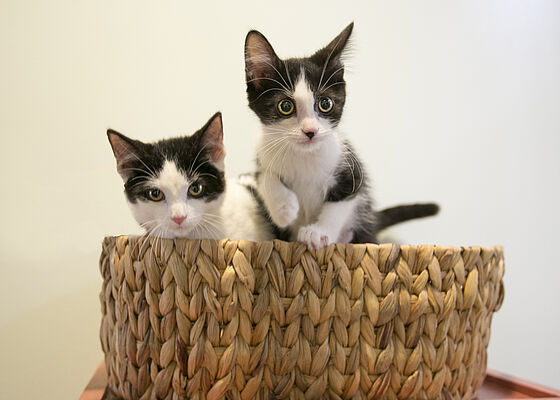When a cat expresses his mojo in a place, we call it dwelling. Dwelling means owning with confidence.
There are three main types of dwellers:
A Bush Dweller is a cat who is confident in spots that are down low and somewhat hidden from view, like under a table or behind a potted plant. From this spot, he can survey his territory, stalk his prey or simply rest. Cats in the wild, hanging out in the bush, are waiting to hunt, to strike, to pounce. One thing they are not doing is hiding.
The Tree Dweller is up in the vertical world. Think about why a leopard takes his kill up into a tree. He’s saying, “I feel safe up here. My kill is safe from the other cats down on the ground. And I want the cats on the ground to see what I’ve done.” Tree dwelling can be anywhere above the ground. It doesn’t necessarily mean way up in the rafters. It can also include a chair, a table or the top of the couch.
The Beach Dweller is down on the floor and out in the open. This is the cat you trip over. This cat is making a territorial play, sending a clear message to you and the other animals in the house that the center of the floor is their territory. They’re saying, “If you want to walk through this room, you’re going to have to go around me.”
Source: Special thanks to Jackson Galaxy for his contributions.
Anti-Dwellers
A cat under the bed or cowering on top of the refrigerator is not expressing confidence. Rather, he is exhibiting fear; it is anti-dwelling. Unconfident cats hide because they’re trying to disappear or get away.
Here are some anti-dwelling behaviors to look out for:
- Caving: These cats are hiding away out of fear. When a cat is caving, he is trying to disappear into a dark, enclosed space where no one can find him. We can allow cats to be tucked away in secluded areas, but we need to control where these places are. A cat may hide under the bed due to fear or stress. You have no way to help him overcome his fear if you cannot make contact with him. Keep hiding areas blocked off if they prevent you from interacting with him. Instead, give him a variety of hiding spots that offer security and comfort to the cat but also enable you to interact with him.
- Fridging: This cat hides on top of the fridge, or in another place that’s up high, to get away from other cats or people in the house who are tormenting him. It doesn’t matter whether the torment is real or perceived. It becomes our very important job as guardians to show him that safety does not equal confidence.

